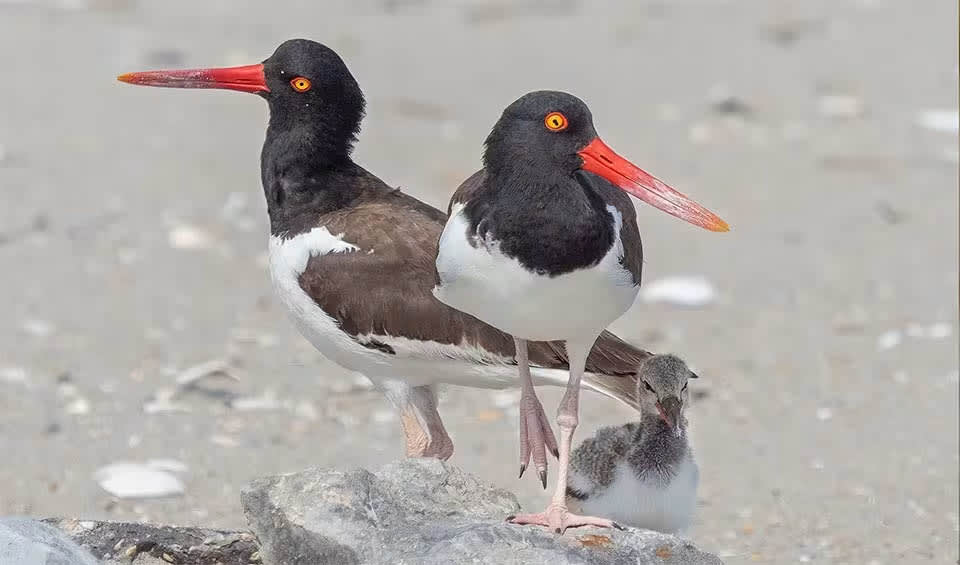Haematopodidae – Oystercatchers
The family with a very muddy taxonomic history
These birds are notable for their striking appearance, with sharp contrasting colors and a specialized bill adapted to their specific feeding habits. They are distributed widely across the globe, inhabiting a variety of shoreline environments, except for the extreme polar regions and certain tropical areas of Africa and Southeast Asia.
Oystercatchers are characterized by their black and white or all-black plumage, which varies between species and regions. Some populations of all-black oystercatchers have been considered distinct species due to variations in their plumage and distribution, while pied oystercatchers, with their black and white feathering, are typically treated as a single species with a broad range.
The strong, bright red or orange bills of oystercatchers are one of their most iconic features. These bills are not only powerful but also highly specialized for prying open mollusks, which are a staple of their diet—hence the name “oystercatcher.” Despite the name, their diet is not limited to oysters but includes a variety of shellfish, which they expertly open with their bills.
Oystercatchers are known for their preference for a variety of shorelines, from rocky coasts to sandy, pebbly, and shelly beaches. Their long, robust legs and thick-knuckled toes are well-suited to walking and running on uneven terrain, and their eyes are adapted to spot potential prey from a distance.
While most oystercatchers are coastal birds, some species, such as the Eurasian oystercatcher and the South Island oystercatcher, do breed inland, sometimes quite far from the sea. These inland breeders often choose river valleys or wetland areas, which offer an abundance of food and suitable ground for nesting.
The breeding behavior of oystercatchers is another point of interest. They typically lay their eggs in simple scrapes in the ground, often on pebble beaches or sandbanks. Both parents share the responsibility for incubation and the care of the young.
Genera in this family
The family with a very muddy taxonomic history


